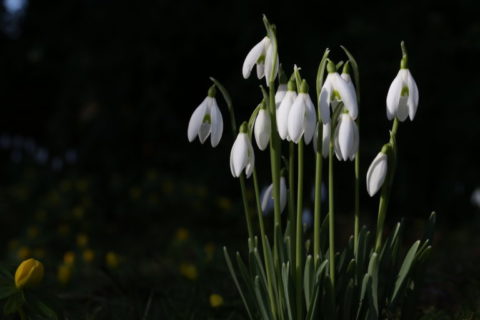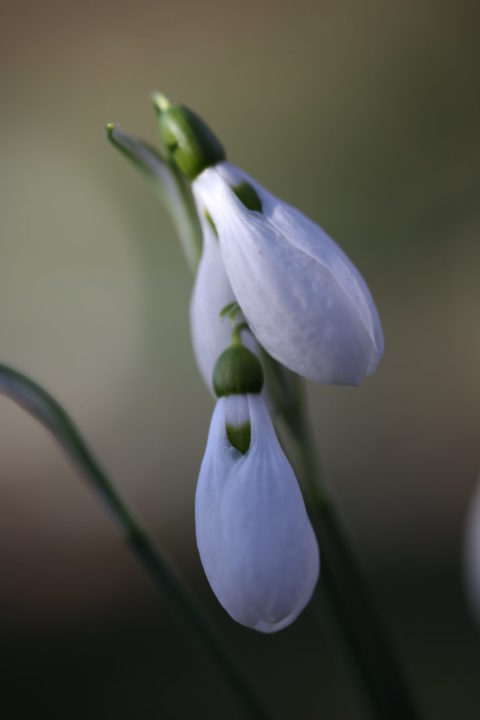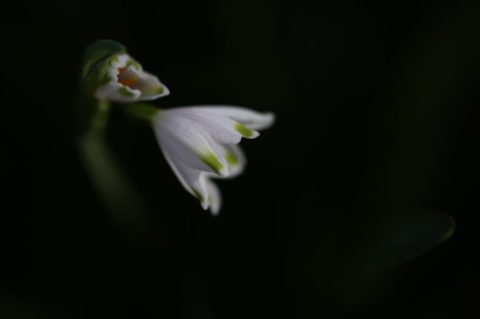TL:DR – I had a whimsical idea that some winter species of moth might be drawn to the whiteness of snowdrop flowers in the dark and so help pollinate these plants. It’s unlikely to be true.
Snowdrops are often considered the heralds of Spring, the first floral buds to open in woodland, churchyard, and garden. Spotting the first snowdrops of the year is often a challenge that has become something of a citizen science climate marker in recent years. We sometimes have a clump of the generic type, if there is such a thing, that pops up in a patio pot around this time of year, but other people report earlier appearances. Of course, there are also strains that naturally flower early too, just to confuse the picture. There were certainly a lot around in early February in various places I was walking and snapping.

Of course, many readers will know all too well that there are many different species and strains of the Galanthus plant. Mrs Sciencebase and I often take the short trip to the National Trust’s Anglesey Abbey in the spring. It is perhaps the nearest place where we might see more than a few of the different types of snowdrop, species, strains, cultivars. Indeed, there’s a cultivar of the common snowdrop Galanthus nivalis, named for the “Abbey”.
Snowdrops generally have a pair of linear leaves sprouting from a subterranean bulb and usually produce a single droopy white flower with a bell shape. There are also wonderfully delicate green markings familiar to anyone who has taken a close look at those flowers. These vary considerably between the different types of snowdrop.
Incidentally, the emergence of green shoots in spring is known as vernalisation from the Latin for spring, vernalis, from where we also get the phrase vernal equinox. But, of course, closely linked to the Latin for green, viridis, from where we get verdant. Anyway, verdant features aside, the flowers of the snowdrop are fairly unusual in that they are mostly white unlike so many other flowers. They also tend to appear well before the northern vernal equinox, which falls on the 20th or 21st March each year.

But, why white, why not red, purple, yellow, blue or indeed any of myriad colours we see in the flowers of other plant species. There are lots of yellow and violet ground cover plants in the spring that bloom before the leaf buds open on the trees. Well, fundamentally, as lovely as we might find flowers, they’re not really meant for us. They evolved over millions of years to attract pollinators, creatures that would assist in the process of transferring pollen from one flower to the receptive parts of another so that fertilisation might occur, seed be set and new plants emerge. Pollinators tend to be invertebrates, bees, famously, but wasps too, butterflies and moths, beetles, flies, and various other types of insect as well as other creatures in less common instances.
Snowdrops emerge when it is rather cold and the earth frozen or even snow encrusted. The name of the most well-known snowdrop species, Galanthus nivalis, means “milk flower of the snow”. In ancient times it was called the white violet by Theophrastus in the 4th Century BCE. The name is not to be confused with the white spring violets, the snowflakes (Leucojum), which resemble the snowdrops but are at least twice as tall and differ in leaf structure.
The time when snowdrops emerge is a time when there are few pollinating insects on the wing with the exception of the odd, exploratory queen bumblebee and perhaps an occasional peacock butterfly emerging early from winter hibernation. Of course, it is worth noting that snowdrops are not native species to the British Isles and in other regions where it is native, Europe and the Middle East, its mileage may vary in terms of pollination opportunities.
There is evidence that while snowdrops do attract bumblebees and flies that pollinate, their downward drooping flowers evolved that drooping posture perhaps to protect them from bad weather. The delicate green markings, it seems, did evolve later to guide pollinators to the business end of the flower. That said, the plants do need pollinators and they do have flowers for that very purpose.

So, going back to the whiter than white nature of those flowers. There is a hypothesis that the reason the snowdrop has such bright white flowers is to attract nocturnal pollinators. Certain species of night-flying moth that might be around in the earliest days of the spring might be attracted to a glowing white apparition shimmering in a moonlit churchyard or woodland and feed on the nectar. In so doing they would, as do many other pollinators, inadvertently pick up pollen on their bodies and transport it unwittingly from flower to flower. Unfortunately, this seems like an almost mythical hypothesis and at the time of writing I have not yet found much evidence to suggest that moths are attracted in this way or indeed that snowdrops glow in the dark at all!